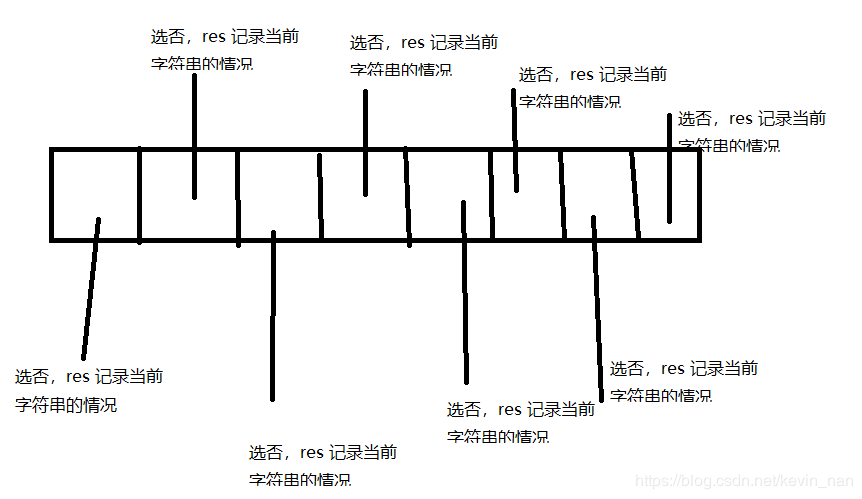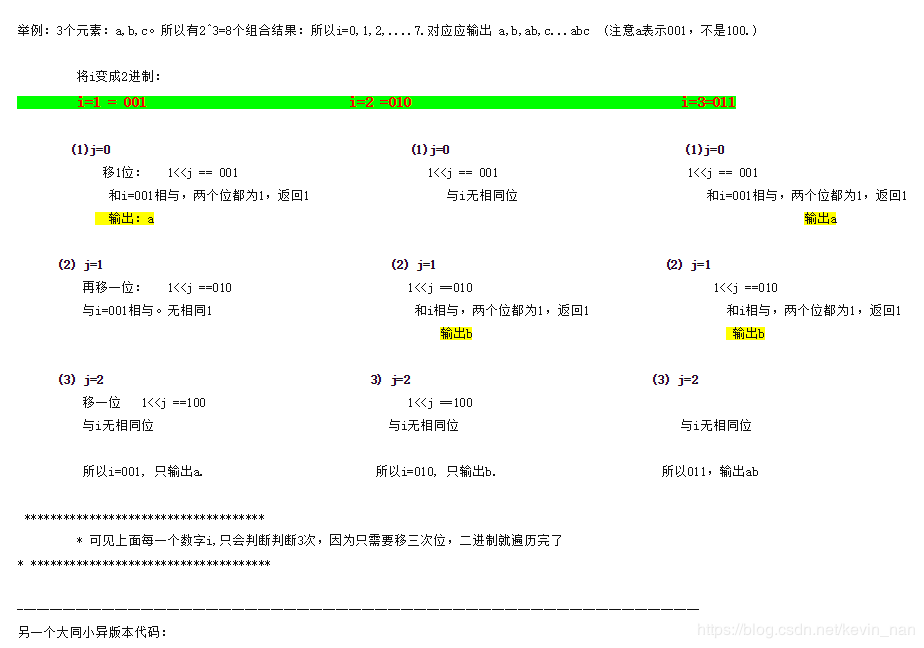按照顺序 以及加入选与不选的问题 采用递归方法表达 并在每一条执行函数中加入参数保存当前字符串的情况

当判断完毕时 输出该字符串
小范围还好 大范围则可能会溢出
求字符串子串 模板 里面会多一种"" 空字符串
import java.util.*;
public class Main {
public static void funcation(String s, int num, String res) {
if (num == s.length())
System.out.println(res);
else {
funcation(s, num + 1, res + s.charAt(num));
funcation(s, num + 1, res);
}
}
public static void main(String[] args) {
Scanner sc = new Scanner(System.in);
String s = sc.nextLine();
String res = "";
int num = 0;
funcation(s, num, res);
}
}
栈的写法
public static void combine(char chs[]){
if(chs.length == 0) return ;
Stack<Character> stack = new Stack<Character>();
for(int i = 1; i <= chs.length; i++){
combine(chs, 0, i, stack);
}
}
//从字符数组中第begin个字符开始挑选number个字符加入stack中
public static void combine(char []chs, int begin, int number, Stack<Character> stack){
if(number == 0){
System.out.println(stack.toString());
return ;
}
if(begin == chs.length){
return;
}
stack.push(chs[begin]);
combine(chs, begin + 1, number - 1, stack);
stack.pop();
combine(chs, begin + 1, number, stack);
}
搜索中看到一些文章 插在这里把https://blog.csdn.net/morewindows/article/details/7370155
这种思路好像行得通 不过截图的具体实现有误
来自https://www.cnblogs.com/lifegoesonitself/p/3225803.html
里面有介绍其他的方法 http://zhedahht.blog.163.com/blog/static/2541117420114172812217/
这篇是用二进制来的https://blog.csdn.net/fxkcsdn/article/details/81328089
